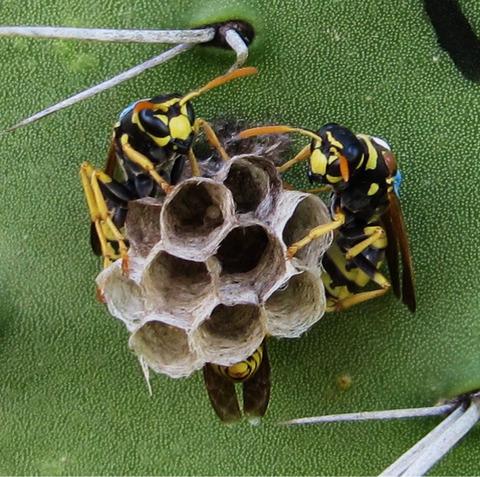当前位置:
X-MOL 学术
›
Ecol. Lett.
›
论文详情
Our official English website, www.x-mol.net, welcomes your
feedback! (Note: you will need to create a separate account there.)
The evolution of eusociality: no risk‐return tradeoff but the ecology matters
Ecology Letters ( IF 7.6 ) Pub Date : 2019-12-29 , DOI: 10.1111/ele.13452 Jeremy Field 1 , Hiroshi Toyoizumi 2
Ecology Letters ( IF 7.6 ) Pub Date : 2019-12-29 , DOI: 10.1111/ele.13452 Jeremy Field 1 , Hiroshi Toyoizumi 2
Affiliation

|
The origin of eusociality in the Hymenoptera is a question of major interest. Theory has tended to focus on genetic relatedness, but ecology can be just as important a determinant of whether eusociality evolves. Using the model of Fu et al. (2015), we show how ecological assumptions critically affect the conclusions drawn. Fu et al. inferred that eusociality rarely evolves because it faces a fundamental ‘risk‐return tradeoff’. The intuitive logic was that worker production represents an opportunity cost because it delays realising a reproductive payoff. However, making empirically justified assumptions that (1) workers take over egg‐laying following queen death and (2) productivity increases gradually with each additional worker, we find that the risk‐return tradeoff disappears. We then survey Hymenoptera with more specialised morphological castes, and show how the interaction between two common features of eusociality – saturating birth rates and group size‐dependent helping decisions – can determine whether eusociality outperforms other strategies.
中文翻译:

真社会性的演变:没有风险回报权衡,但生态很重要
膜翅目真社会性的起源是一个令人感兴趣的问题。理论倾向于关注遗传相关性,但生态学对于真社会性是否进化也同样重要。使用 Fu等人的模型。 (2015),我们展示了生态假设如何严重影响得出的结论。傅等人。推断真社会性很少进化,因为它面临着基本的“风险回报权衡”。直观的逻辑是,工人生产代表了机会成本,因为它延迟了实现再生产回报。然而,根据经验合理的假设(1)工蚁在蚁后死亡后接管产卵,(2)生产力随着每增加一个工蚁而逐渐增加,我们发现风险回报权衡消失了。然后,我们用更专业的形态种姓对膜翅目进行了调查,并展示了真社会性的两个共同特征——饱和出生率和群体规模依赖的帮助决策——之间的相互作用如何决定真社会性是否优于其他策略。
更新日期:2019-12-30
中文翻译:

真社会性的演变:没有风险回报权衡,但生态很重要
膜翅目真社会性的起源是一个令人感兴趣的问题。理论倾向于关注遗传相关性,但生态学对于真社会性是否进化也同样重要。使用 Fu等人的模型。 (2015),我们展示了生态假设如何严重影响得出的结论。傅等人。推断真社会性很少进化,因为它面临着基本的“风险回报权衡”。直观的逻辑是,工人生产代表了机会成本,因为它延迟了实现再生产回报。然而,根据经验合理的假设(1)工蚁在蚁后死亡后接管产卵,(2)生产力随着每增加一个工蚁而逐渐增加,我们发现风险回报权衡消失了。然后,我们用更专业的形态种姓对膜翅目进行了调查,并展示了真社会性的两个共同特征——饱和出生率和群体规模依赖的帮助决策——之间的相互作用如何决定真社会性是否优于其他策略。











































 京公网安备 11010802027423号
京公网安备 11010802027423号